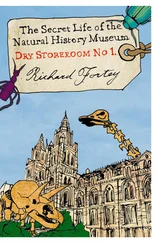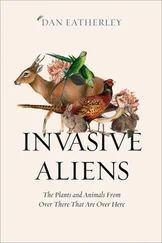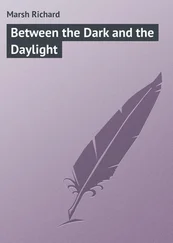Could a scene like that witnessed at the beginning of this chapter been played out by trilobites in deep geological time? It is possible. To see evidence I must take you with me to the small town of Arouca in northern Portugal. It lies at the end of a very winding drive into the hills from the old seafaring city of Porto. The prevalence of hillsides covered with eucalyptus trees in some parts of this landscape can be depressing, as these antipodeans are out of place here; but their contribution to the local economy pushes all ecological niceties to one side. Most go to pulp for paper, for these efficient trees grow faster than native species. So in another sense these eucalypts, too, are natural survivors. Every now and then bush fires flare up uncontrollably, fuelled by the volatile oils of the ‘gum trees’; black swathes along the hillsides record their ugly legacy. In the higher hills, pretty valleys contain ancient mills and farmhouses built of crudely squared-off large blocks of the grey granite that makes up the highest, bare ground in the region. In geological terms, obstinate granite is probably the longest survivor of all. Little has happened to the face of these sensible buildings since medieval times other than a dappling of face-paint provided by lichens. On the bleak granite moors nearby are burial chambers that have seen much of human history pass, but still endure. Since the time of the trilobite, whole mountain ranges comprised of this most persistent stone have been worn away grain by grain by the inexorable forces of erosion, and rendered down to sea level. Life outlasts even mountains, for the greatest survivor of all is DNA.
Arouca must be the only town in the world with a trilobite monument, which is a tall spike sitting a little uneasily in the centre of a roundabout. The small hill town is bidding to achieve European Geopark status, and part of its claim is as the home of giant trilobites, which figure prominently on the monument. To see the real thing I head off to the slate quarries above the town near the little village of Canelas. Mining has been a part of the culture in the region for a long time. The Romans were in the hills seeking gold, and old workings excavated into tough Ordovician sandstones can still be seen atop a local high spot, where a dark and slippery stairway leads down into a ferny crevice. The same sandstones preserve fossils of burrows made by trilobites digging into an ancient sea floor, providing yet another type of treasure. Nowadays, the booty is roofing slate. A mass of Ordovician slates known as the Valongo Formation over-lies the sandstones and runs across country. The slates are nearly black, and split into flat sheets that can be further split again until they make usable roofing slabs. Once prepared this way, they are very durable commodities. The slates are extracted from large quarries by blasting out huge chunks of rock, which are then carried away to a factory for further working. The flat planes along which the slate cleaves also furnish a record of Ordovician sea floors, albeit now turned almost vertically as a result of convulsions of the earth. Every now and then a slab covered with trilobites is discovered. They are, as my Spanish colleagues exclaimed without overstatement ¡espectacular! The fossils often show up pale greyish against their dark background. Under normal circumstances it is a rare event to find trilobites much bigger than a small shoe, but in this locality they are often as big as tureens. The largest trilobite in the world, perhaps a metre in length, may be lurking among unstudied collections, but specimens 70 cm long are already familiar. Not only are they large, they are also numerous. Because whole bedding planes (which represent former sea floors) are extracted, an extensive view of a tragic moment in time is occasionally recovered: it is a fossil graveyard, with bodies laid out at the moment of death, a community of cadavers. A scenario like this could not be extracted by the usual tapping of the geologist’s hammer upon a rock: it requires activity on an industrial scale. Fortunately, the quarry owner is aware of the importance of his slates in exposing a sea floor perhaps 470 million years old; time enough to erode three mountain ranges, granite and all. Many of the trilobites are preserved on site in a private museum that the owner has generously dedicated to conserving these fossil remains. A dozen different species are on display there; to one in thrall to the past like me it is an extraordinary experience to see these grey bodies covering every wall. It has something of the feel of a picture gallery, and I have to remind myself that these were once scuttling animals as intent on their business as any living horseshoe crab. *
Many of the large slabs show assemblages of just one species together, and the individuals are all large and of similar size. They are often complete bodies, which suggests they are entire animals that have been killed rather than, say, the ‘cast-offs’ left behind after moulting, when bits and pieces might be expected, arranged higgledy-piggledy. There are examples where the bodies partially overlap. All this is very like the mating congregations of horseshoe crabs along Delaware Bay. Imagine if some catastrophe had killed and preserved the crabs at the height of their nuptials. A volcanic eruption might fit the bill; this would bury and kill the animals at exactly the same time. After eons passed the sediments would have hardened into rock and the crabs would be fossils; compaction of the sediment would also have flattened down the buried beasts. Some fossil specimens would still partly overlap their partners, frozen in the act. The younger animals would have been elsewhere, so they are not represented among the fossils. It is a plausible scenario, even a tempting one. We have to add an extra complication, because something additional had happened to the Portuguese trilobites during their long sojourn in the rock. The whole mass of slates of which they have become a part has been squeezed in a tectonic vice that has twisted some specimens out of true until they look a little lopsided. Others have been stretched somewhat, and as a result claims about the ‘longest ever trilobite’ have to be treated with caution.
A more critical examination of the evidence identifies some important differences between Delaware Bay today and Ordovician Portugal. The most obvious of these is that the giant trilobites were clearly not gathered upon a beach. They were overwhelmed and killed on the sea floor. Local Portuguese geologists believe that the Ordovician animals lived in a marine basin with poor oceanic circulation, so that deeper layers could become stagnant. The congregated trilobites might have been overcome by a phase when oxygen dropped to lethal levels: after all, even trilobites needed to breathe. Such anoxia is not much of a problem in Delaware Bay. The trilobites could still have been gathering for reproductive purposes, of course. They might have even been safer from predators in the deeper basin. But then it makes us uneasy to think of the trilobites depositing their eggs in such an inhospitable place – unless anoxic events were so rare as to have little effect on their long-term survival. Then there is the fact that a number of the slabs seem to show a mixture of species. Could they have been gathered together for some purpose other than mating? Unlike Limulus, a freshly moulted ‘soft shelled’ trilobite would have been vulnerable until it grew a new hard carapace. Maybe these congregations were huddled together for mutual protection away from the prying eyes of predators. With these ambiguities in the picture the case for a direct comparison with the behaviour of modern horseshoes begins to seem weaker. A sceptic would say that it is simple minded to expect similar habits to endure for hundreds of millions of years. Perhaps so, but common problems in nature often come up with comparable solutions, the more so if the organisms concerned are related. Those trilobite examples with marginally overlapping bodies might merit further examination, since they do recall the struggle for mating among the horseshoe crabs, and it is more than a guess that eyes in these animals were particularly attuned to seeking out mates. I still like to think that the crystal eyes of trilobites may have had similar lustful intent.
Читать дальше












